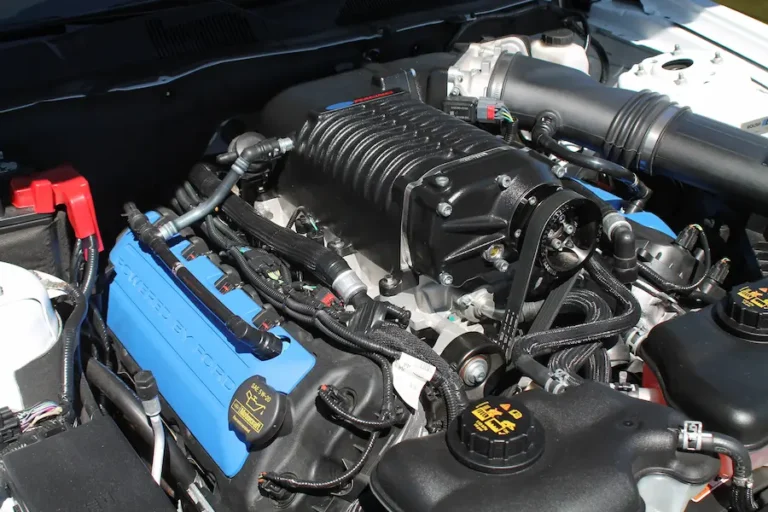Toyota 22RE Engine: Reliability and Performance

Key Takeaways:
- The Toyota 22RE engine is widely known for its longevity and reliability.
- While not a powerhouse, it offers consistent performance, especially in off-road applications.
- It’s relatively simple to maintain, making it ideal for DIY enthusiasts.
- Common issues are minor and easy to address with regular maintenance.
- The 22RE engine remains a popular choice for modifications, allowing users to enhance performance while maintaining its core durability.
Introduction
In my years of working with Toyota trucks, the 22RE engine has earned a special place in my heart. It’s not the flashiest or the most powerful engine, but its simplicity and reliability make it stand out. If you’re looking for an engine that won’t quit on you—whether on the highway or tackling tough off-road terrain—the 22RE is a true workhorse. I’ve spent countless hours under the hood of my own Toyota Pickup, and trust me, this engine defines dependable.
1. History of the 22RE Engine
1.1 Evolution and Production Years
The 22RE engine was introduced in 1983 as a fuel-injected version of the 22R. Its production continued until 1995, and during this time, it built a reputation for being bulletproof. Having owned a couple of vehicles powered by the 22RE myself, I can tell you, this engine quickly became a go-to for people who valued reliability over raw power.
1.2 Models and Vehicles That Used the 22RE
The 22RE found its home in several iconic Toyota models like the Pickup and the 4Runner. For me, it’s hard to think about these trucks without immediately picturing a 22RE under the hood. Its consistent performance and ability to handle both city driving and rugged off-road adventures made it the engine of choice for many Toyota enthusiasts, myself included.
2. Key Specifications of the 22RE Engine
2.1 Engine Layout and Design
The 22RE keeps things simple with its 4-cylinder, 2.4-liter setup. With a strong cast iron block and an aluminum head, it’s tough enough to handle anything you throw at it. I’ve always appreciated how easy it is to work on this engine—whether it’s a quick spark plug change or something more involved, everything is easily accessible.
2.2 Technical Specs
- Horsepower: 105-115 HP
- Torque: 137 lb-ft
- Fuel System: Electronic fuel injection
- Compression Ratio: 9.0:1
2.3 Material and Build Quality
What really sets the 22RE apart is its durability. The cast iron block gives it incredible strength, while the aluminum head helps keep the engine cool. I’ve personally pushed this engine through all kinds of terrain, and it’s never let me down, thanks to the quality materials that went into its construction.
3. Performance of the 22RE Engine
3.1 Power Output and Speed
The 22RE isn’t going to blow your doors off with power, but that’s not why people love it. With around 105-115 horsepower, it’s plenty for most tasks, especially off-road. I’ve always found that the 22RE strikes a good balance between power and reliability—you won’t win drag races, but it’ll get you where you need to go, no matter the conditions.
3.2 Acceleration and Throttle Response
This engine delivers a predictable and smooth throttle response, which is something I’ve come to appreciate in my years of driving Toyota trucks. Whether you’re cruising on the highway or navigating a rocky trail, the 22RE’s low-end torque is exactly what you need.
3.3 Fuel Efficiency
One of the things that continues to impress me about the 22RE is its fuel efficiency. I’ve averaged about 20 MPG in mixed driving conditions, which is solid for an older engine. It’s not only easy on the wallet but also reduces the number of fuel stops during long trips—definitely a plus when you’re off the beaten path.
4. Reliability and Durability
4.1 Common Reliability Factors
The 22RE has a reputation for running forever—and I’m not exaggerating. Mine’s still going strong after all these years, and I’ve heard of plenty of engines hitting the 300,000-mile mark. There’s something reassuring about an engine that you know will start every time, even after years of hard use.
4.2 Maintenance Simplicity
One of the best things about the 22RE is how easy it is to maintain. From oil changes to timing chain replacements, everything is straightforward. I’ve done a lot of the work on my engine myself, and with the parts being both affordable and easy to find, there’s no reason why this engine can’t keep running for another few hundred thousand miles.
4.3 Real-world Experiences
I’ve seen 22RE engines go well past the 300,000-mile mark with nothing more than routine maintenance. I still remember hitting 200,000 miles on mine and thinking, “This engine isn’t even close to being done.” It’s a satisfying feeling, knowing you’ve got an engine that will keep going as long as you take care of it.
5. Common Issues with the 22RE Engine
5.1 Timing Chain Wear
One of the more common issues you’ll run into with the 22RE is timing chain wear. I remember the first time I heard that telltale rattle—sure enough, the timing chain guides were worn out. Luckily, replacing the chain and guides is a pretty straightforward job, and once done, you’re good for another 100,000 miles.
5.2 Oil Leaks and Gasket Failures
Like any old engine, the 22RE isn’t immune to a few leaks. The valve cover and oil pan gaskets are usually the culprits, but they’re easy fixes. I’ve had to replace a few gaskets over the years, but it’s a quick and inexpensive fix that’s well worth doing to keep the engine in top shape.
5.3 Cooling System Weaknesses
The radiator and water pump can also wear out over time, particularly if you’re pushing the engine hard in off-road conditions. I’ve learned to keep an eye on the cooling system, especially during those long summer road trips.
6. Maintenance and Care Tips
6.1 Routine Maintenance Checklist
- Regular oil changes (every 3,000-5,000 miles).
- Replace timing chain and guides at 100,000 miles.
- Inspect and replace air filters and spark plugs.
- Check for oil leaks and gasket wear regularly.
6.2 Diagnostic and Repair Tips
If your engine’s feeling a bit rough, don’t panic—it’s probably just something small like a clogged air filter or worn-out spark plugs. I’ve learned that keeping a few basic tools and spare parts on hand can save a lot of time and hassle when diagnosing issues.
6.3 Cost of Ownership
The 22RE is easy on the wallet when it comes to maintenance. Timing chain replacements and gasket repairs are among the more costly tasks, but compared to other engines, keeping a 22RE running is incredibly affordable.
7. Upgrading the 22RE Engine
7.1 Popular Aftermarket Modifications
Over the years, I’ve experimented with a few modifications on my 22RE. One of my favorite upgrades was adding a performance exhaust. It didn’t transform the engine, but it gave it a bit more responsiveness and made highway driving a little smoother.
7.2 Performance Gains from Modifications
If you’re looking to wake up your 22RE, a turbo kit or cam upgrade will do the trick. You’ll definitely feel the difference once you hit the gas. With the right modifications, like a turbo kit or upgraded camshafts, you can squeeze quite a bit more power out of the 22RE.
7.3 Maintaining Reliability Post-Upgrades
I always recommend making sure that any performance upgrades are balanced with appropriate reinforcements, like cooling system upgrades. In my experience, the 22RE handles mods well, but reliability should always come first.
8. 22RE in Off-Roading
8.1 Off-Road Performance
The 22RE may not be a powerhouse, but it shines off-road. I’ve taken mine through some pretty gnarly terrain, and the engine’s low-end torque and durability made it an ideal companion. Whether you’re climbing rocky hills or navigating muddy trails, this engine will get you through.
8.2 Modifications for Off-Road Use
One of the first things I did to my 22RE-powered Pickup was install a lift kit and add skid plates. These mods, combined with the engine’s natural torque, made off-roading not just possible but enjoyable. If you’re serious about off-road driving, these upgrades are a must.
8.3 Best Practices for Off-Road Driving with the 22RE
To keep your 22RE performing well off-road, regular maintenance is key. Checking the air intake for dust, monitoring oil levels, and ensuring the cooling system is in good shape are all crucial when you’re out in the wilderness.
9. Comparison with Other Toyota Engines
9.1 22RE vs. 22R
I’ve driven both the carbureted 22R and the fuel-injected 22RE, and while the 22R has its charms, I much prefer the consistency of the 22RE. The fuel injection makes a noticeable difference in cold starts and overall reliability.
9.2 22RE vs. 3VZ-E
The 3VZ-E V6 offers more power, but in my experience, it lacks the rock-solid reliability of the 22RE. If you’re looking for raw power, the 3VZ-E might be for you, but for me, I’ll take the 22RE any day for its longevity.
9.3 22RE vs. Modern Toyota Engines
Modern engines may have more power and better emissions control, but I’ve found that nothing beats the ease of working on a 22RE. If you enjoy turning wrenches and getting your hands dirty, the 22RE is an engine you’ll love for decades.
10. 22RE Engine for Restoration Projects
10.1 Why It’s Popular for Restorations
Restoring a vehicle with a 22RE is a joy for anyone who loves working on classic engines. I’ve rebuilt a few myself, and the availability of parts and ease of the rebuild process makes it a perfect project for anyone looking to bring an old Toyota back to life.
10.2 Rebuilding the 22RE
A full rebuild involves replacing things like the timing chain, gaskets, and seals. While rebuilding a 22RE is something that can be done at home, it does take time and patience. I’ve done it myself, and the satisfaction of hearing that rebuilt engine purr is worth every second spent in the garage.
10.3 Cost of Restoration
Restoring a 22RE is surprisingly affordable. Whether you’re sourcing parts from a local junkyard or buying new components, you can complete a rebuild for a fraction of what it would cost to restore a more complex engine.
11. Community and Enthusiast Support
11.1 Online Forums and Groups
I’ve spent hours in forums like Yotatech and IH8MUD, learning tips and tricks from other 22RE enthusiasts. These online communities are a treasure trove of knowledge for anyone looking to maintain or modify their 22RE.
11.2 Events and Meetups
There’s nothing quite like getting together with fellow Toyota enthusiasts at local off-road events or meetups. Sharing stories, swapping parts, and seeing the variety of 22RE-powered rigs never gets old.
11.3 Resources for 22RE Owners
If you’re just starting out with a 22RE, there are plenty of resources available, from YouTube tutorials to factory service manuals. I highly recommend investing in a good manual if you plan to do any serious work on your engine.
12. Future of the 22RE Engine
12.1 Is It Still Viable in 2024?
In my opinion, the 22RE is as viable as ever. Sure, it’s not the most modern engine out there, but for those of us who value simplicity and reliability, it’s still a great option, even in 2024.
12.2 Environmental Concerns
While the 22RE isn’t the most fuel-efficient engine, proper maintenance can minimize its environmental impact. I’ve always tried to keep mine running as clean as possible, and I think that’s the key to owning an older engine in today’s world.
12.3 Possibility of Electric Conversions
With the rise of electric conversions, I wouldn’t be surprised to see more 22RE-powered vehicles converted to electric. While I love the sound of a running 22RE, I can see the appeal of giving an old truck new life with an electric drivetrain.
Conclusion
For me, the Toyota 22RE engine is more than just a piece of machinery—it’s a reliable companion that has taken me on countless adventures, both on and off-road. Its simplicity, durability, and ease of maintenance make it a favorite among enthusiasts, and I’m confident that, with the right care, it’ll continue to serve drivers for decades to come. Whether you’re a DIY mechanic looking for an engine that won’t quit or an off-road enthusiast in need of reliable power, I highly recommend the 22RE. It may not be the most powerful engine, but when it comes to reliability, there’s nothing quite like it.
Frequently Asked Questions (FAQs)
1. What is the average lifespan of a 22RE engine?
With proper maintenance, the 22RE can easily last over 300,000 miles.
2. How much does it cost to rebuild a 22RE engine?
A typical rebuild can cost between $1,500 to $2,500, depending on the parts and labor involved.
3. Can the 22RE engine be turbocharged?
Yes, there are aftermarket turbo kits available for the 22RE, which can increase power significantly.
4. What makes the 22RE popular among off-roaders?
Its low-end torque, simplicity, and reliability make it ideal for off-road driving.
5. Are 22RE parts easy to find today?
Yes, 22RE parts are widely available due to the engine’s popularity and the large number of vehicles that still use it.
Thanks for checking out this article on EngineEcho.com! Hope you found this article: "Toyota 22RE Engine: Reliability and Performance" helpful! If you liked it and want to dive into more car engine topics, head over to our homepage. There's always something new to discover in the world of engines. Enjoy your reading journey!
Check out our previous article: Does Engine Oil Have an Expiry Date?






